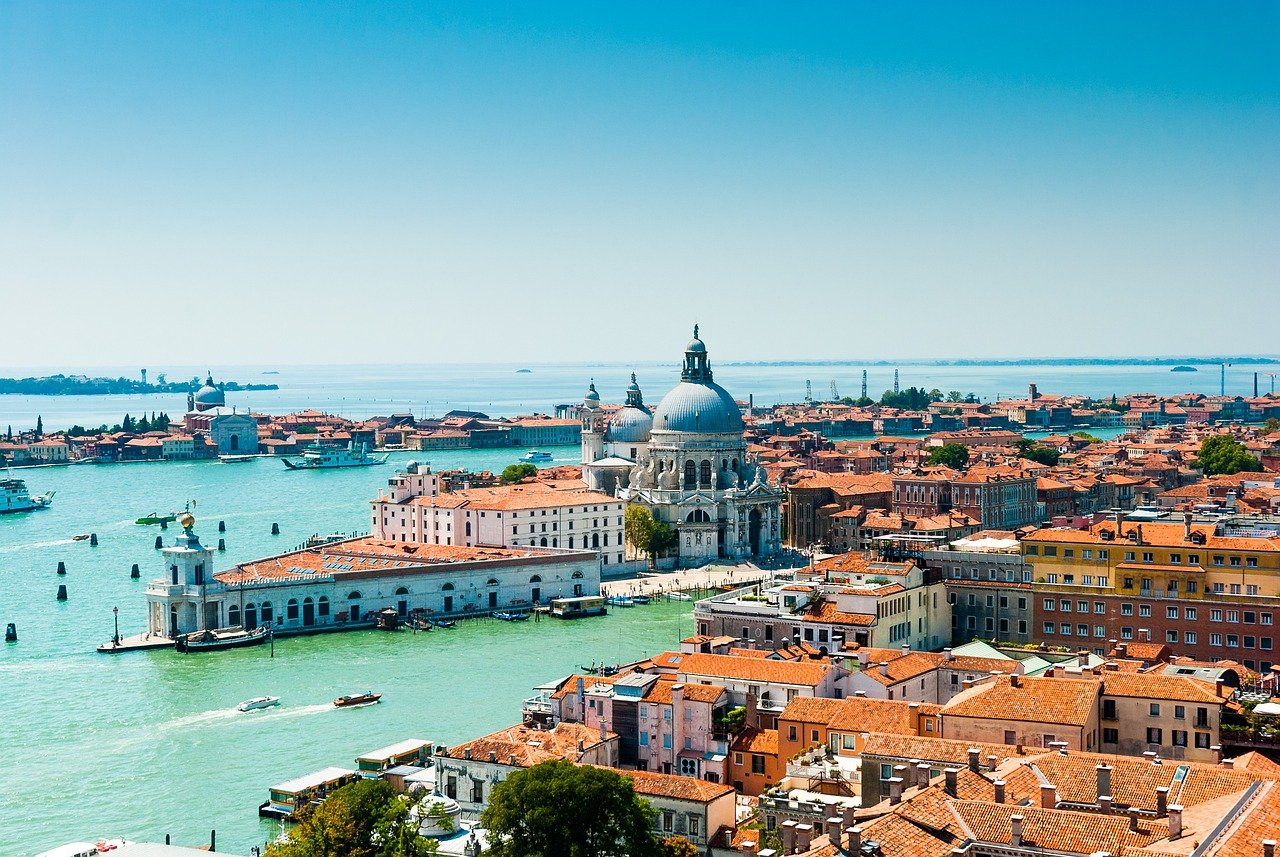When visiting Venice, one of the most important factors to consider is the weather. From the climate to the seasonal temperatures and precipitation levels, understanding the weather patterns in Venice is crucial for planning a successful trip. Not only does the weather have an impact on what to pack, but it also affects tourism in the city. In this blog post, we will explore the weather in Venice, including the climate, seasonal temperatures, precipitation levels, and its effects on tourism. Additionally, we will provide useful tips for dressing for Venice weather to help you make the most of your visit.
Weather Venice
The weather in Venice can be quite unpredictable. One moment it’s sunny and clear, and the next moment it’s pouring rain. It’s a city that experiences a wide range of weather conditions throughout the year, so it’s always a good idea to come prepared.
During the summer months, Venice can get quite hot and humid. The temperatures can reach up to 30 degrees Celsius or even higher. It’s important to stay hydrated and wear light and breathable clothing to beat the heat.
In the winter, Venice can get quite chilly, with temperatures dropping down to 2 degrees Celsius or even lower. It’s a good idea to pack warm clothing such as sweaters, jackets, scarves, and gloves to stay comfortable during your visit.
Climate Of Venice
The climate of Venice is one of its most unique and distinguishing features. Located in northeastern Italy, Venice experiences a subtropical climate with warm summers and cool winters. The city is surrounded by water, which has a significant impact on its weather patterns. The Adriatic Sea plays a major role in regulating the temperature and humidity levels in Venice throughout the year.
The summers in Venice are typically hot and humid, with temperatures ranging from 25 to 30 degrees Celsius (77 to 86 degrees Fahrenheit). The combination of high temperatures and humidity can make the city feel quite uncomfortable at times. It is not uncommon for visitors to seek respite from the heat by taking a boat ride or enjoying a refreshing gelato in one of the city’s many piazzas.
As for the winters, Venice tends to experience mild to cool temperatures, with average highs ranging from 6 to 11 degrees Celsius (43 to 52 degrees Fahrenheit). Although snowfall is rare in Venice, the city can occasionally see some frost and fog during the winter months. It is advisable to pack warm clothing and layers when visiting Venice in the colder seasons to stay comfortable.
- Summer temperatures range from 25 to 30 degrees Celsius (77 to 86 degrees Fahrenheit).
- Winter temperatures range from 6 to 11 degrees Celsius (43 to 52 degrees Fahrenheit).
- Visitors can expect hot and humid summers and mild to cool winters in Venice.
| Season | Average Temperature (°C) |
|---|---|
| Spring | 10-18 |
| Summer | 25-30 |
| Fall | 12-20 |
| Winter | 6-11 |
Weather Patterns In Venice
Venice is known for its stunning canals, historic architecture, and rich cultural heritage. However, one important aspect that often gets overlooked is the weather patterns in this beautiful city. Situated in the northeastern part of Italy, Venice experiences a unique climate that greatly influences the way of life for its residents and the millions of tourists who visit each year.
When it comes to weather in Venice, it can be characterized as a combination of Mediterranean and humid subtropical climate. This means that the city experiences hot, humid summers and relatively mild winters. The climate of Venice is greatly influenced by its location surrounded by water, specifically the Adriatic Sea.
During the summer months, which typically span from June to August, temperatures in Venice can soar to around 30 degrees Celsius (86 degrees Fahrenheit). The city becomes a popular destination for beachgoers, with many flocking to the Lido di Venezia, a nearby island known for its sandy shores. It’s important to pack lightweight and breathable clothing if you plan to visit during this time as the heat can be quite intense.
| Month | Average High Temperature (°C) | Average Low Temperature (°C) |
|---|---|---|
| January | 6 | 1 |
| February | 8 | 2 |
| March | 12 | 5 |
The weather patterns in Venice take a milder turn during the winter months of December through February. Temperatures during this time range from around 6 to 8 degrees Celsius (43 to 46 degrees Fahrenheit). Although the city may experience occasional frost and fog, snowfall is a rare occurrence. It’s wise to carry a light jacket or sweater to keep warm while exploring the charming streets and alleys of Venice.
Precipitation is fairly evenly distributed throughout the year in Venice. The city receives an average of 90 rainy days annually, with November being the wettest month. Spring and autumn bring pleasant weather with mild temperatures, making them ideal seasons to visit.
Venice’s Seasonal Temperatures
When planning a trip to Venice, it is essential to consider the seasonal temperatures. The city experiences a humid subtropical climate, with mild winters and hot summers. The weather in Venice can vary greatly throughout the year, so it is crucial to pack accordingly.
In the winter months, from December to February, temperatures in Venice can range from 3°C to 10°C (37°F to 50°F). Although it rarely snows, the city can experience foggy and damp conditions during this time. It is advisable to layer clothing and bring a warm jacket to stay comfortable while exploring the city’s beautiful canals and historic sites.
Spring in Venice, from March to May, brings milder temperatures ranging from 10°C to 18°C (50°F to 64°F). The city starts to bloom with colorful flowers, making it a perfect time to visit. However, it is still recommended to bring a light jacket or sweater, as evenings can be slightly chilly.
Summer is the peak tourist season in Venice, and temperatures can soar between 25°C and 30°C (77°F to 86°F) from June to August. The combination of high temperatures and humidity can make the city feel quite hot and crowded. It is advisable to wear light and breathable clothing, along with comfortable shoes, as you’ll likely be doing a lot of walking to explore the charming streets of Venice.
Fall in Venice, from September to November, is a pleasant time to visit as temperatures range from 13°C to 20°C (55°F to 68°F). The city is less crowded, and you can enjoy the charm of Venice without the scorching sun. A light jacket and layering are still recommended, especially in the evenings when temperatures can drop.
Overall, no matter when you visit Venice, it is essential to check the weather forecast before your trip and pack accordingly. Don’t forget to bring a comfortable pair of shoes, as you’ll be strolling around the beautiful city and its historic sites. Enjoy your time in Venice and embrace the unique seasonal temperatures it offers!
Venice’s Precipitation Levels
Venice, known for its beautiful canals and stunning architecture, is also famous for its unique weather patterns. One of the key factors that influence the overall climate of Venice is its precipitation levels. Whether you are planning a visit to this enchanting city or simply curious about its weather, understanding the precipitation patterns is essential.
Venice experiences a Mediterranean climate with distinct wet and dry seasons. The city receives the majority of its rainfall during the autumn and winter months, particularly in November and December. The precipitation levels during these months can be rather high, with frequent rainfall and occasionally even thunderstorms. So, if you are planning a visit to Venice during this time, don’t forget to pack your umbrella.
During the spring and summer months, the precipitation levels in Venice decrease significantly. The city experiences much drier weather, with occasional rainfall but generally sunny and warm days. This is the ideal time to explore the beautiful canals and iconic landmarks of Venice without the worry of heavy rain dampening your plans.
| Month | Precipitation (mm) |
|---|---|
| January | 70 |
| February | 55 |
| March | 65 |
| April | 75 |
| May | 65 |
| June | 50 |
| July | 35 |
As depicted in the table above, Venice experiences varying levels of precipitation throughout the year. The months of January, April, and May generally see higher amounts of rainfall, while June and July receive the least. It’s important to keep in mind that these levels can fluctuate from year to year, so it’s always a good idea to check the weather forecast before your trip.
Overall, Venice’s precipitation levels play a significant role in shaping the city’s climate and should be taken into consideration when planning a visit. Whether you prefer to explore the enchanting streets under the drizzle of rain or bask in the sunshine by the canals, Venice offers a unique experience no matter the weather.
Effects Of Weather On Tourism In Venice
The Effects of Weather on Tourism in Venice
Venice, often referred to as the “City of Canals,” is undoubtedly one of Italy’s most popular tourist destinations. Its unique charm and picturesque settings attract millions of visitors from around the globe each year. However, the weather in Venice can have a significant impact on tourism and the overall experience for travelers. The fluctuating weather patterns throughout the year can determine the number of tourists visiting the city and their activities during their stay.
One of the primary factors influencing tourism in Venice is the seasonal temperatures. Summers in Venice can be scorching hot, with temperatures soaring above 30 degrees Celsius. This weather entices tourists to explore the city’s stunning architecture, hop on gondolas for romantic canal rides, and indulge in gelato while strolling along the famous Piazza San Marco. On the other hand, winter brings colder temperatures, with occasional snowfalls. The chilly weather during the winter months may discourage some tourists from visiting, but it also offers a unique opportunity to witness the magical beauty of the city during the festive season.
Precipitation levels in Venice also play a crucial role in tourism. The city experiences moderate rainfall throughout the year, but the frequency and intensity vary from season to season. Spring and autumn witness higher precipitation levels, which can lead to occasional flooding. While this may be a concern, it also adds an element of intrigue to the city’s allure. Tourists can navigate the flooded streets in exquisite boots and take memorable pictures of the Venetian canals shimmering under the rain.
- As tourists, it is essential to be prepared for the weather in Venice.
- During the summer months, don’t forget to pack sunscreen, a hat, and comfortable walking shoes.
- In winter, bring warm layers, a waterproof jacket, and sturdy boots to make the most of your visit.
- When exploring the city, carry a compact umbrella to shield yourself from occasional rain showers.
The weather in Venice undoubtedly impacts the tourism industry, with peak seasons and off-peak periods. The pleasant spring and autumn temperatures attract a considerable number of tourists, striking a balance between comfortable sightseeing and avoiding large crowds. On the other hand, the scorching summers and chilly winters often deter some travelers, leading to quieter periods in terms of visitor numbers. However, regardless of the weather, Venice’s unique charms and attractions continue to captivate visitors throughout the year.
| Season | Temperature Range | Main Attractions |
|---|---|---|
| Spring | 10°C – 20°C | Grand Canal boat tours, St. Mark’s Basilica |
| Summer | 25°C – 35°C | Gondola rides, Rialto Bridge, Venice Lido beach |
| Autumn | 15°C – 25°C | Biennale Art Exhibition, Doge’s Palace |
| Winter | 0°C – 10°C | St. Mark’s Square Christmas Market, Murano Glass Factory |
Tips For Dressing For Venice Weather
When planning a trip to Venice, one of the most important things to consider is the weather. The city experiences a unique climate that can vary significantly throughout the year. Whether you’re visiting during the hot summer months or the chilly winter season, it’s essential to pack the right clothing and accessories to ensure a comfortable and enjoyable stay.
1. Layer Up
Venice’s weather can be quite unpredictable, so it’s always a good idea to dress in layers. This allows you to adjust your clothing throughout the day as temperatures fluctuate. Start with a lightweight base layer, such as a breathable cotton shirt or blouse, and then add a sweater or jacket on top. By layering your clothing, you can easily adapt to the changing weather conditions and stay comfortable no matter where your Venice adventures take you.
2. Be Prepared for Rain
As Venice is known for its canals, it’s essential to be prepared for the possibility of rain. Having a compact and lightweight waterproof jacket or raincoat is a must. Additionally, carrying a small umbrella in your bag can be a lifesaver when unexpected showers occur. With the right rain gear, you can continue exploring the city without getting drenched and enjoy the unique charm Venice has to offer, rain or shine.
3. Comfortable Footwear
While Venice is a city where walking is the primary mode of transportation, it’s essential to have comfortable footwear. Opt for closed-toe shoes or sneakers that offer support and are suitable for navigating the cobblestone streets. Avoid heels or flimsy sandals, as they can quickly become uncomfortable and impractical for exploring. Prioritize comfort over fashion when it comes to choosing footwear for your Venice adventure.
4. Protect from the Sun
During the summer months, Venice can get scorching hot, and the intense sun can be unforgiving. To protect yourself from the sun’s rays, make sure to pack a wide-brimmed hat, sunglasses, and sunscreen with a high SPF. These items will not only shield you from sunburn but also help you stay cool and comfortable as you navigate the city’s beautiful streets and canals.
Conclusion
With these tips in mind, you’ll be well-prepared to dress appropriately for the ever-changing weather in Venice. Remember to layer up, be prepared for rain, choose comfortable footwear, and protect yourself from the sun. By packing the right clothing and accessories, you can fully enjoy your time in this enchanting city, no matter what the weather has in store for you.
Frequently Asked Questions
What is the weather like in Venice?
The weather in Venice can vary depending on the season. Summers are generally hot and humid, with temperatures reaching up to 30°C (86°F) in July and August. Winters are cold, with temperatures dropping to around 3°C (37°F) in January.
What is the climate of Venice?
Venice has a humid subtropical climate, influenced by the Adriatic Sea. Summers are hot and muggy, while winters are cold and damp. The city also experiences high levels of humidity throughout the year.
What are the weather patterns in Venice?
Venice experiences four distinct seasons. Spring (March to May) and autumn (September to November) are generally mild and pleasant. Summers (June to August) are hot and humid, while winters (December to February) are cold and damp.
How much precipitation does Venice receive?
Venice receives an average annual rainfall of around 790mm (31 inches). The wettest months are usually November and December, while the driest months are July and August.
How does weather affect tourism in Venice?
Weather plays a significant role in tourism in Venice. The city is a popular destination for outdoor activities, such as gondola rides and exploring the historic streets. Unfavorable weather conditions, such as heavy rains or extreme temperatures, can impact the visitor experience.
How should I dress for the weather in Venice?
When visiting Venice, it’s important to dress appropriately for the weather. In the summer, lightweight and breathable clothing is recommended, along with a hat and sunscreen. In the winter, layering is key to stay warm, including a waterproof jacket and sturdy shoes for potential flooding.
How does the weather in Venice impact tourism?
The weather in Venice can have both positive and negative impacts on tourism. Good weather, especially during the peak tourist season, attracts more visitors and encourages outdoor activities. However, extreme weather conditions, such as high tides or heavy rains, can disrupt travel plans and lead to temporary closures of popular attractions.


